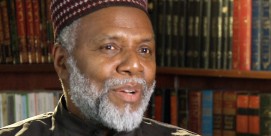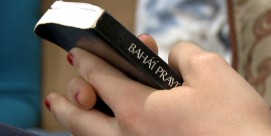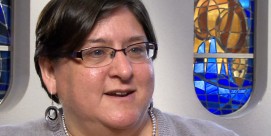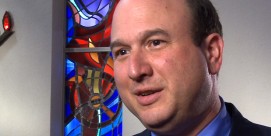In This Episode << SLIDE LEFT TO SEE ADDITIONAL SEGMENTS
Rabbi Irwin Kula Interview
Read more of the Religion & Ethics NewsWeekly September 8, 2009 interview about the meaning of the Jewish High Holidays with Rabbi Irwin Kula, president of the National Jewish Center for Learning and Leadership in New York City:
This period is called either the High Holy Days, the High Holidays, the Awesome Days, and they incorporate the days of Rosh Hashanah, the New Year, and then ten days in between Rosh Hashanah and Yom Kippur, which are called the ten days of repentance, and then Yom Kippur, the Day of Atonement. There really are three basic questions that these ten days invite us to think about. One is can I change as a human being? Can I really become better? I think that’s a really hard question to ask. Can I become better or is this the way it is and I’m doing the best I can, and that’s it? And the second question is, is forgiveness possible? Can I forgive other people, and can I feel forgiven? I think that’s also a very difficult question. We talk a lot about forgiveness and wanting to be forgiven and to forgive other people, but it’s really hard. And the third question that runs through all of these days is am I accountable for my behavior? And whether you believe in a God in the sky or the cosmos or reality or the universe or whatever it is your belief system is, do you actually believe that you’re accountable for how you behave? And I think those three questions and themes run through the entire High Holy Day period.
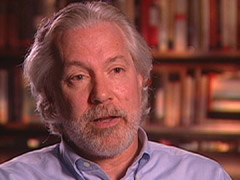 Can I really change? Can forgiveness be real in my life, and can I be accountable? You just can’t answer those questions. You actually have to practice answering them, and so it turns out that the 30 days before Rosh Hashanah—really the 40 days before Yom Kippur—are days devoted to practicing in those three areas. So, we actually practice asking what changes in our behavior do we have to make that would be more aligned with who we imagine we ought to be, who we think God wants us to be. We practice forgiveness. In other words, you can’t come on Yom Kippur, on the Day of Atonement, and expect some spiritual forgiveness experience without first preparing by asking people for forgiveness for things that you’ve done and by granting forgiveness to people who have done things to you. And, finally, unless you actually begin to think about your behavior and what you are accountable for and what have been the consequences of the previous year’s behavior, you’re not going to have a Yom Kippur experience.
Can I really change? Can forgiveness be real in my life, and can I be accountable? You just can’t answer those questions. You actually have to practice answering them, and so it turns out that the 30 days before Rosh Hashanah—really the 40 days before Yom Kippur—are days devoted to practicing in those three areas. So, we actually practice asking what changes in our behavior do we have to make that would be more aligned with who we imagine we ought to be, who we think God wants us to be. We practice forgiveness. In other words, you can’t come on Yom Kippur, on the Day of Atonement, and expect some spiritual forgiveness experience without first preparing by asking people for forgiveness for things that you’ve done and by granting forgiveness to people who have done things to you. And, finally, unless you actually begin to think about your behavior and what you are accountable for and what have been the consequences of the previous year’s behavior, you’re not going to have a Yom Kippur experience.
The practice amongst the many practices in the forty days prior to Yom Kippur, first and foremost, [is] what I call a kind of spiritual, moral, or ethical inventory, and that is to go through one’s life, the different areas in one’s life. First, the family, family relationships, the most intimate relationships, extending out to friendships, then work relationships and how one is operating at work with other people and the work one is doing. Then the larger community, world, nature—to actually go through those areas. My practice, and the practice that I suggest, is to take two things. Take your checkbook and take your Day-Timer or Blackberry calendar and to look—how did I use my time this year? Because that says a lot about who we are. And how did I use my money this year? So there’s that piece, which is part of the practice in preparation, and then to actually recognize about where one is and ask people for forgiveness, and that means literally picking up the phone and saying “Hey, you know what? Earlier this year, I know, I dissed you” or “I did something that was very inappropriate,” or “I took credit for something,” whatever it is, or “I ignored you,” and to be able to come to terms and ask for forgiveness. It turns out the more you practice and prepare for Rosh Hashanah and Yom Kippur, the richer that experience is.
In more traditional communities, in the mornings of the week before Rosh Hashanah there are penitential prayers. Those are prayers in which one asks for forgiveness, and it’s a kind of asking for forgiveness in general, in the hope that it’ll stimulate where, specifically, I need to ask for forgiveness, and that’s every morning for the week before. There’s also another practice starting the month before Rosh Hashanah—in other words, those forty days prior to Yom Kippur—of blowing the shofar, which is one of the central symbols of the High Holiday experience, blowing the shofar at the end of the morning prayer service, and the shofar is just a blast of the ram’s horn, and it, in a sense, wakes you up. You’re not used to hearing a blast of a ram’s horn, and it is supposed to cause you to become more alert to your own behavior.
What the Jewish wisdom tradition invites us to think is that before one can actually approach God, or what I call kind of the “vertical dimension,” one has to have the horizontal dimension in order. I would say it this way, that the moral alignment between us as individuals is a necessary component and base for the spiritual relationship that we want. I once heard a story about the Dalai Lama. He came to the United States, one of his first trips, and they brought him to a meditation center, and what struck him was that people were engaged in spiritual practice who hadn’t developed an ethical practice, and he said this was the first time he ever saw spiritual practice being built and created independent of ethical practice, and I think that most religious traditions and most spiritual wisdom traditions would suggest that the alienation or the disconnection between us and God is actually a consequence and a function of a deep disconnection between us and other human beings, and so the practice in Jewish life is you can’t come to God on Yom Kippur and ask for forgiveness or ask for a realignment in the relationship if you haven’t done the work between you and other human beings.
Changing your fate for the coming year is a part of a larger question: Do we believe that our behavior actually affects our destiny? Now we have to understand that in a fairly careful way because there’s not a direct cause-effect correspondence that we can generally pick up: “If I’m good, there’ll be no sickness; if I’m bad, I’ll be punished.” Well, it turns out that we know, most of us, that life doesn’t move that easily, and cause-effect is not that clean. But there’s a deeper sense, I think, at least in my experience, and I think this is most people’s experience, there’s a deeper sense that there’s a relationship between my behavior and my destiny, in how I feel about myself, in how I approach the world, in that whatever happens to me somehow I’m capable of dealing with what happens to me at a higher, more evolved level if my behavior is correct and aligned with the things and values that I hold most deeply. So there’s a sense on Rosh Hashanah and Yom Kippur in which thousands of people gather together and go through many, many prayers in which we ask ourselves, “How have I done?” For illuminating and actually elucidating the variety of potential sins, and the word for sin in Hebrew is “chet,” which means “missing the mark,” the places where I’ve missed the mark and the sense that if I can discover some of those places and begin to correct them that my destiny will actually be better.
No matter what path you’re on, the path is always filled with unpredictability. The path is always filled with things that we can’t control and places that we can’t control. But what we can really control, as best we can, is our behavior up front and our responses to other people, and responses to the unpredictability and vulnerability and fragility in life. And Rosh Hashanah and Yom Kippur invite us to think about that. One of the most important prayers on both Rosh Hashanah and Yom Kippur comes right at the center of the worship service, when the most people are in the synagogue, is a prayer “Who shall live, and who shall die?” And that’s a question that we don’t often ask ourselves, and I don’t think we should ask it every day; if you ask it every day, it would be a little crazy. But once a year to come clean, to look around and say, “You know what? There’ are no guarantees here. There is a fragility to our lives. Given that, how do I want to live?” If I look at my job, I look at my spouse, I look at my friend, I look at my parents, and I say “Wow, what is really true about life or death is that I don’t know, no matter what I do, no matter how good I take care of people, I don’t know if next year at this time everybody’s going to be here.” Well, given that, what are my obligations? How do I want to treat the people both close to me, and how do I want to act in a world in which I may not be here a year from now? Now, confronting our mortality up front and surfacing the anxiety that that does produce, and then asking who do I want to be—given that, generally speaking, helps us become more ethical human beings and much more sensitive to life.
We know that we’re not going to be able to change everything, and, of course, the paradox is that we’ll probably be here the following Rosh Hashanah and Yom Kippur, probably saying the exact same prayers and probably, for most of the things that we tried to change, having not been so successful. But part of what it means to be a human being is to stay in that game, to believe that yes, we can change, that the change happens incrementally, to not imagine that your life is over because you haven’t made those changes, and that’s part of the message of Rosh Hashanah and Yom Kippur. When I get to the service on Rosh Hashanah morning and get to those prayers that I know I said the exact same prayers—I’m 51-one years old—I remember saying them probably consciously since I’m about seven or eight. And it’s funny, pretty much for the last 25-30 years it’s the same ones that I’m still working on, you know? How to be a little bit more patient with the people I care about, how to be a little less oriented towards being in conflict with the people with whom I deeply disagree, how to be a little bit more generous and a little less ego-centered. So, you know, these are the ongoing dilemmas, and I think that if you have a regular, set time in a year, or even in a week or in a day, but here we’re talking about the High Holidays, if you have a regular, set time in which a community comes together by the thousands to do a little introspection and ask how am I aligned with other human beings, how am I aligned with God, and how am I aligned with who I deeply want to be, chances are we’ll be a little bit better.
The central activity of Rosh Hashanah and Yom Kippur, the activity that defines almost everything that’s happening, is the word “teshuva.” Teshuva comes from the word, “shuv,” which means “to return,” and there’s this sense that deep down, deep, deep, deep, deep down, you know, in the privacy of your own heart and your own soul and mind and spirit, we know we want to be good people, deep down. But what happens in life is things get distorted, and we get hurt, and we become fearful and filled with anxiety and scared, and so we don’t act in light of what deep, deep, deep down we know we can be and want to be. Teshuva is this process over Rosh Hashanah and Yom Kippur in which we return to that place deep, deep down of who we really want to be, and so everything having to do with Rosh Hashanah and Yom Kippur, all the prayers and all the liturgical readings and all the readings from scripture and the variety of practices, whether it’s blowing a shofar, or on Yom Kippur it’s fasting and staying in synagogue for most of the day, all of the practices are designed to help us make teshuva, return to that deepest path that we know we want to be on.
“Repent” would be a more Protestant or Christian term for the word for teshuva. We don’t actually have—there’s no word “repent” that way. But repent means to try to make up for what you do. We have a process in Jewish wisdom, and Maimonides was the most important articulator of this, we have a process of gaining forgiveness that I call the four R’s, and the first is to realize what one has done. You know, until you realize what you’ve done wrong, you can’t do anything about it, and realization is really hard. You know, you can tell a person they’ve done wrong, and a person can tell me “you did something wrong, you did something wrong.” But until you see it and realize it, you’re not in the game, the forgiveness game. So the first is to realize. The next is to regret, actually, that I did it. The next thing is to attempt to repair. Sometimes that repair is in a conversation. Sometimes that repair is in financial remuneration. Sometimes that repair is in actually diminishing myself a little bit to allow a realignment in the relationship and changing my behavior, and only then is there the fourth R—reconciliation, and it’s those four R’s together, which is the process of forgiveness, which for us, for Jews, is what we mean by repentance.
The last thing on Yom Kippur is a final long blast of the shofar, and at that moment I should feel two things exactly at the same time. One is I am really perfect and loved just the way I am, and I can do better, and to hold those two things together—I’m perfect and loved just as I am, and I can do better—is the process of teshuva working.
On Rosh Hashanah afternoon, after having been in synagogue most of the day and then coming and having a festive New Year’s meal, a practice developed called Tashlikh, from the word, l’hashlikh, to cast away or to throw away, and it is, like all ritual, a theatrical re-enactment, and we go to a brook or a river or a stream or an ocean, a body of water, and we symbolically, either taking bread or something, cast away our sins into the water, and, of course, the water carries them away, and having been in this process of teshuva, this process of spiritual and moral inventory, over the last thirty days, and now anticipating the next ten days to actually physically remove and cast away and stand at water that is a cleansing symbol to begin with, that carries away, in a sense, our sins is a very powerful interior, in a sense, re-enactment together as a community. So, literally, you just stand at the water and from young to old take a crumb of bread and throw it into the water. And there’s a passage that says “Cast away my sins, cast away my sins.” And then, very often, since it’s done kind of late afternoon and the sun is beginning to set, very often birds will come and they’ll take the bread away, and it has a wonderful theatrical feel and a sense of liberation, that my sins are being removed from me. And what that’s really saying is that I may sin, but I’m not sinful. And I think that’s a piece of the Rosh Hashanah and Yom Kippur experience. Very often, for ourselves and for other people, we confuse doing bad things with being bad people. And I’m not sure, really, if we can evolve and grow morally and psychologically and spiritually as long as we think we are bad people. We’re people who, very often, do bad things, who very often sin but have the capacity to cast away that sin, to work through those mistakes and become better people.
One of the interesting things about Rosh Hashanah in general and about the High Holiday period is that the celebratory aspect, which is Rosh Hashanah and the celebration of the New Year, actually comes before the atonement focus, which is Yom Kippur. One would expect that first I have to atone, first I have to make sure I’ve come to terms with who I am, and I’ve realized and regretted and repaired and gotten better, and then I get to celebrate. In fact, the Jewish calendar runs it in reverse. First we’re going to celebrate the New Year. Now in the context of celebration of a New Year, the change really is possible. Now let’s get down to the business of change. And I think pedagogically and methodologically and psychologically that’s a very, very important move. First, everything’s going to be okay. Now let’s work on things, as opposed to let’s work on things and see if everything’s going to be okay.
On Yom Kippur, five times during the day there’s a confessional, there’s a list of “for the sin that I did with my mouth, for the sin that I did with my eyes, for the sin that I did by stealing, for the sin that I did with arrogance,” and there’s five times during the Yom Kippur service one goes through, one goes “Al Khet” for the sin. It’s a practice of hitting one’s heart, kind of to get the heart going, that type of idea, and what’s interesting is almost all of the sins recognized are between human beings. They are not between the human being and God. On Yom Kippur, this intense, spiritual, introspective day, the vast majority of sins that are evoked or attempted to bring to consciousness are between human beings, which is a way of saying that if you really want to know God, you’d better start with the most visible symbol and image of God available, which is other human beings.
Atonement is really just a fancy word for the forgiveness process. The word Yom Kippurim, from the word “kappare,” really means to be engaged in this forgiveness process. Atonement is just a fancy word for “at one.” If you engage in forgiveness, if you do the introspection that is required during this period you will feel more at one with yourself, at one with other people, at one with the cosmos, or reality, or the universe, or God, whatever it is you call it. And that “at-one-ment,” that alignment is the goal of the Rosh Hashanah-Yom Kippur period.
In the central prayer of Rosh Hashanah Yom Kippur, “Who shall live and who shall die,” in that prayer it says on Rosh Hashanah it is written (in other words your fate, your destiny is written down, is inscribed), and on Yom Kippur it’s sealed. And there is this sense, and again, whether one believes it literally or as a deep metaphor, the only issue for me is, do you take it seriously, and that our behavior does affect the nature of our life. I don’t know if it affects whether we literally live or die, but it surely affects whether we live or whether we die in life. In that respect, there’s the sense that on Rosh Hashanah, who we are going to be based on, how we make this assessment, is written down. And, yet, then you have another ten days in which to really go through that process even more deeply of asking who you are, and then it gets sealed. And “gets sealed” doesn’t mean that it’s closed forever, because of course, the paradox, or the joke, or the irony, or the, you know, in Jewish wisdom there’s as many traditions that say but it’s really not sealed until the end of the whole holiday period, or three weeks later, at the end of the Festival of Tabernacles and Simchat Torah, that it’s really not sealed. And even then it’s really not sealed, because every morning you go through a practice in which you ask for forgiveness. So “sealed” is a way of saying something does happen if you spend a full day on Yom Kippur and you spend full days on Rosh Hashanah, the forty days and the process of engaging in teshuvah and forgiveness, something does happen, and there’s a feeling that if I’ve missed that or not done it right, that it does affect who we are. It does affect our destiny.
The focus of the High Holiday period is not on death. The focus is on life. It turns out that one of the great ways to focus ourselves on life is to think about death. That just turns out to be the paradox. So if on Yom Kippur we fast, if on Yom Kippur we deny ourselves certain bodily pleasures and engage in a kind of deep introspection on the moral, psychological, and spiritual level, well, it turns out we will become better people. I mean, that’s just what happens, but again there are no guarantees. You can go through everything on Yom Kippur and go through the motions, and on the other hand you can sit in Yom Kippur and never use a prayer book, but just really think about who you are, and it can make a difference in your life.
Part of the ritual on Yom Kippur is by denying yourself these variety of bodily activities, eating, making love, washing, one begins to simulate in a way one’s bodily death, and, you know, by the end of the day on Yom Kippur, that hour before the final shofar blowing at sunset, people, you know, their faces are a little more craggy and their beards a little bit—and they’re running on empty a little bit, and one discovers that there’s a deeper life than simply the physical life. And if we can tap into that life, which I think every religious and spiritual wisdom tradition tries to do, to tap into that deeper dimension of life beyond just the material and physical and body, there is a deeper or new life that emerges, and that final blow of the shofar, and the shofar blow is only dependent on one’s breath; there’s no notes, you know, it’s just the breath of life. Sometimes I call it a kind of mouth-to-mouth resuscitation for us. You know, you hear that sound and there is a rebirth and in that respect confronting one’s own mortality, at least for me confronting my own mortality. My mother passed away between last Yom Kippur and this Yom Kippur, and I know that, for me, that will be central in my mind. One of the major prayers in Yom Kippur is what’s called Yizkor, “to remember,” and the community as a whole remembers people who they loved and who’ve passed away, and you take that twenty minutes in the middle of the day and you remember someone who died and a lot of thoughts go, like, how did I really operate with that person and what do I need to do differently, and with time being so short, how do I want to love, and how do I want to be more compassionate, and how do I want to be there? And so it turns out confrontation with death is one of the great methodologies to make us appreciate life.
The central ritual on Yom Kippur, besides prayer itself, that’s most well known is fasting. Every single tradition has fasting. What fasting does is it says I’m not going to concentrate on my physical body right now. I’m going to concentrate on a different kind of food. Rather than nutrients for my body, I’m going to concentrate on the nutrients for my spirit, my heart, and my ethical way, and that surely does help. We know there’s physical aspects to this, too. If you don’t eat, certain ego structures begin to loosen up and you’re a little bit more open. I mean, it turns out there’s a lot more tears Yom Kippur afternoon when we talk about our lives than there are Yom Kippur morning, because in the end when one doesn’t eat, one’s a little bit less in control of all of the structures we build to defend against difficult truths, to defend against insights and illuminations that are going to cause pain and will force us to think about our lives in different ways. So we fast as a way to become more in tune with our spiritual and our inner life.
The most visible, really the only symbol of Rosh Hashanah, is the ram’s horn, which is blown—100 different sounds or times is it blown. There are three basic sounds to the Rosh Hashanah. One is a longer sound. That sound then is broken up into three, and that sound is broken up into nine, and each sound stimulates a kind of call. One is more plaintive, one is more a little bit frenzied, with more anxiety, and those calls together are to evoke and to wake us up. “Arise from the slumber” is what Maimonides says the shofar sounds are supposed to do, and there’ll be 1000 people or 2000 people in the room, in the synagogue, and it is perfectly silent except for the sound of the shofar that’s piercing through all of the armor, so to speak, the internal armor that we construct to avoid hearing the deepest call of our life, which is to be decent human beings.
On Yom Kippur, there’s no shofar blowing until the very, very last act at sunset. The sun is set, Yom Kippur ends. The ending of Yom Kippur is the reciting of “Hear O Israel, the Lord our God, the Lord is one,” “God is God,” and that’s recited one time, another thing is recited three times, another thing is recited seven, but at the end of Yom Kippur the very final act is the longest blow of the entire High Holiday period, and it’s just one long blow.
Kol Nidre is the first prayer of the Yom Kippur service, which begins at evening and extends to the next night at sunset. Kol Nidre means “all my promises,” and it’s a paragraph in which the congregation comes together and says all the promises, all the obligations, all the bonds that I have made this year, all of them should be dissolved. Now, what that is really about is it’s making a claim that if I’m really going to assess who I am, I have to look at every promise, every obligation, every commitment that I’ve made, because that’s what defines us—our promises, our obligations, our commitments….It’s very frightening to imagine that we have no obligations…Now, once one has that experience, by the end of the Kol Nidre, which lasts about 10-15 minutes, it’s sung three times by the cantor in a very dramatic way, at the end of that all of my promises, all of my obligations are nullified. The rest of Yom Kippur, in a sense, is taking back the obligations, reassessing them….And as Yom Kippur unfolds, one takes back one’s promises in new commitments….So Kol Nidre is a very profound method and technology for stripping us of all promises and obligations that may distort us so that we stand there naked, just us, with the ability to take back promises, take back obligations over the next 25 hours….You’ve got no responsibilities now. You have no promises, no obligations. They’re all null and void. Now, who do you want to be?

